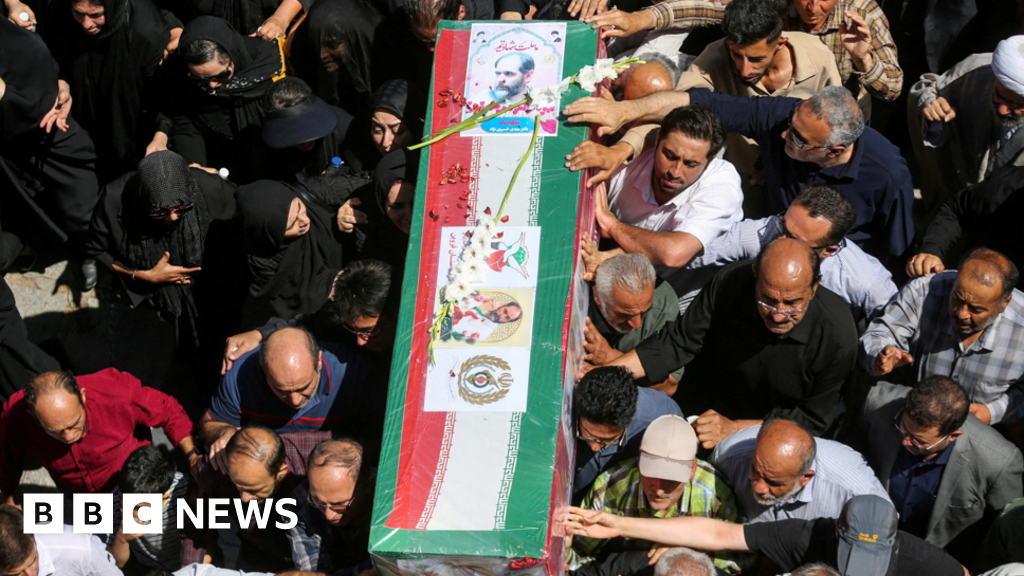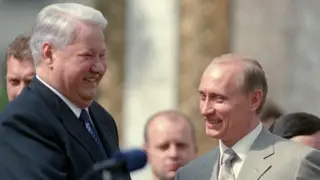
A state funeral is taking place in Iran for about 60 people, including military commanders and nuclear scientists, killed during the 12-day conflict with Israel.
Coffins draped in the Iranian flag, bearing portraits of deceased commanders, were flanked by crowds near Tehran’s Enghelab Square.
The conflict ended with a ceasefire earlier this week, after the US became directly involved by bombing key nuclear sites in Iran.
Huge crowds of mourners dressed in black chanted slogans, waved Iranian flags and held portraits of those killed.
Ahead of the event, a media campaign urged people to participate, with authorities providing free bus and metro rides. Government offices were shut for the day.
Among those being laid to rest is Mohammad Bagheri, the highest-ranking military officer in Iran who was chief of staff of Iran’s armed forces.
Bagheri will be buried with his wife and daughter, who were killed in an Israeli strike. In total, Iranian authorities said 627 people were killed in Iran. Israeli officials said 28 people were killed in Israel following missile attacks by Iran.
Saturday’s funeral also includes Hossein Salami, commander-in-chief of the Islamic Revolutionary Guards, as well as a number of nuclear scientists such as Mohammad Mehdi Tehranchi, who was head of Azad University in Tehran.
It comes after US President Donald Trump said he would “absolutely” consider bombing Iran again.
Responding to a question from the BBC’s Nomia Iqbal at a White House press briefing on Friday, he said he would “without question” attack the country if intelligence concluded Iran could enrich uranium to concerning levels.
Trump has also repeated his assertions that Iran was “decimated”, writing: “Why would the so-called ‘Supreme Leader’ Ayatollah Ali Khamenei, of the war-torn country of Iran, say so blatantly and foolishly that he won the war with Israel, when he knows his statement is a lie.”
Trump also claimed to have known “exactly where he [Khamenei] was sheltered”, saying he “would not let Israel, or the US Armed Forces… terminate his life”.
“I saved him from a very ugly and ignominious death, and he does not have to say, ‘thank-you, president Trump!'”, Trump posted on his Truth Social platform.
Iran’s foreign minister, Abbas Araghchi, warned Trump against making “disrespectful” comments about Khamenei, who claimed US and Israeli strikes on Iranian nuclear sites had achieved “nothing significant”.
“If President Trump is genuine about wanting a deal, he should put aside the disrespectful and unacceptable tone towards Iran’s Supreme Leader, Grand Ayatollah Khamenei,” Araghchi posted on X.
“The Great and Powerful Iranian People, who showed the world that the Israeli regime had no choice but to run to ‘Daddy’ to avoid being flattened by our Missiles, do not take kindly to Threats and Insults.”
Araghchi has admitted that “excessive and serious” damage was done to Iran’s nuclear sites by the recent bombings.
The head of the International Atomic Energy Agency (IAEA) has said it is still not known how much of Iran’s nuclear capabilities – including highly-enriched uranium and the centrifuges needed to purify the metal – have been destroyed or moved.
The agency’s director general Rafael Grossi also said that stopping Iran from being able to build nuclear weapons would not be achieved through military attacks.
“You are not going to solve this in a definitive way militarily, you are going to have an agreement,” he told the BBC’s US partner CBS News.
On social media, Trump claimed that in recent days he had been “working on the possible removal of sanctions, and other things, which would have given a much better chance to Iran at a full, fast, and complete recovery”.
But he said Khamenei’s comments had deterred him, declaring: “Instead I get hit with a statement of anger, hatred, and disgust, and immediately dropped all work on sanction relief, and more.”



